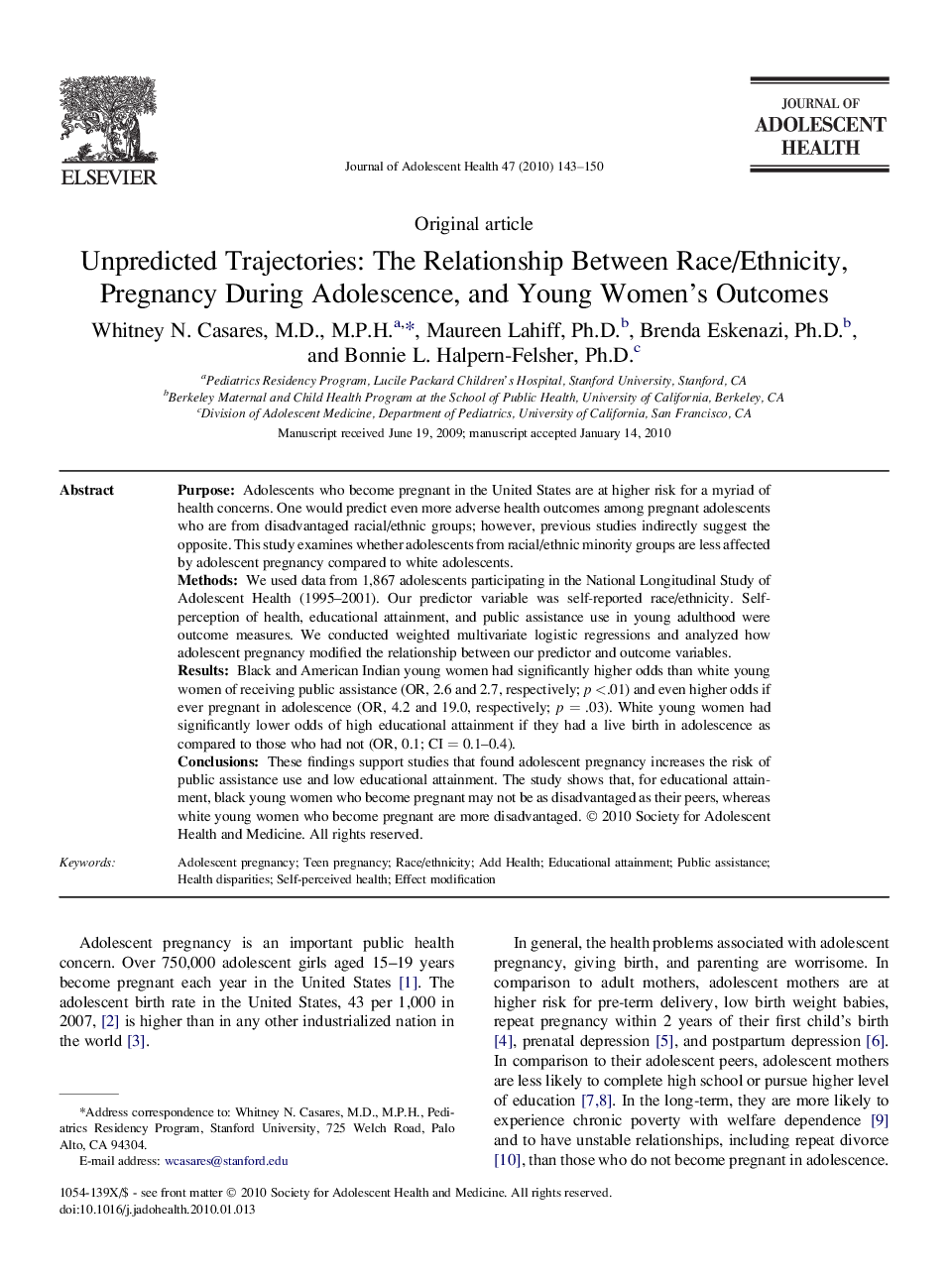| Article ID | Journal | Published Year | Pages | File Type |
|---|---|---|---|---|
| 1079650 | Journal of Adolescent Health | 2010 | 8 Pages |
PurposeAdolescents who become pregnant in the United States are at higher risk for a myriad of health concerns. One would predict even more adverse health outcomes among pregnant adolescents who are from disadvantaged racial/ethnic groups; however, previous studies indirectly suggest the opposite. This study examines whether adolescents from racial/ethnic minority groups are less affected by adolescent pregnancy compared to white adolescents.MethodsWe used data from 1,867 adolescents participating in the National Longitudinal Study of Adolescent Health (1995--2001). Our predictor variable was self-reported race/ethnicity. Self-perception of health, educational attainment, and public assistance use in young adulthood were outcome measures. We conducted weighted multivariate logistic regressions and analyzed how adolescent pregnancy modified the relationship between our predictor and outcome variables.ResultsBlack and American Indian young women had significantly higher odds than white young women of receiving public assistance (OR, 2.6 and 2.7, respectively; p <.01) and even higher odds if ever pregnant in adolescence (OR, 4.2 and 19.0, respectively; p = .03). White young women had significantly lower odds of high educational attainment if they had a live birth in adolescence as compared to those who had not (OR, 0.1; CI = 0.1--0.4).ConclusionsThese findings support studies that found adolescent pregnancy increases the risk of public assistance use and low educational attainment. The study shows that, for educational attainment, black young women who become pregnant may not be as disadvantaged as their peers, whereas white young women who become pregnant are more disadvantaged.
